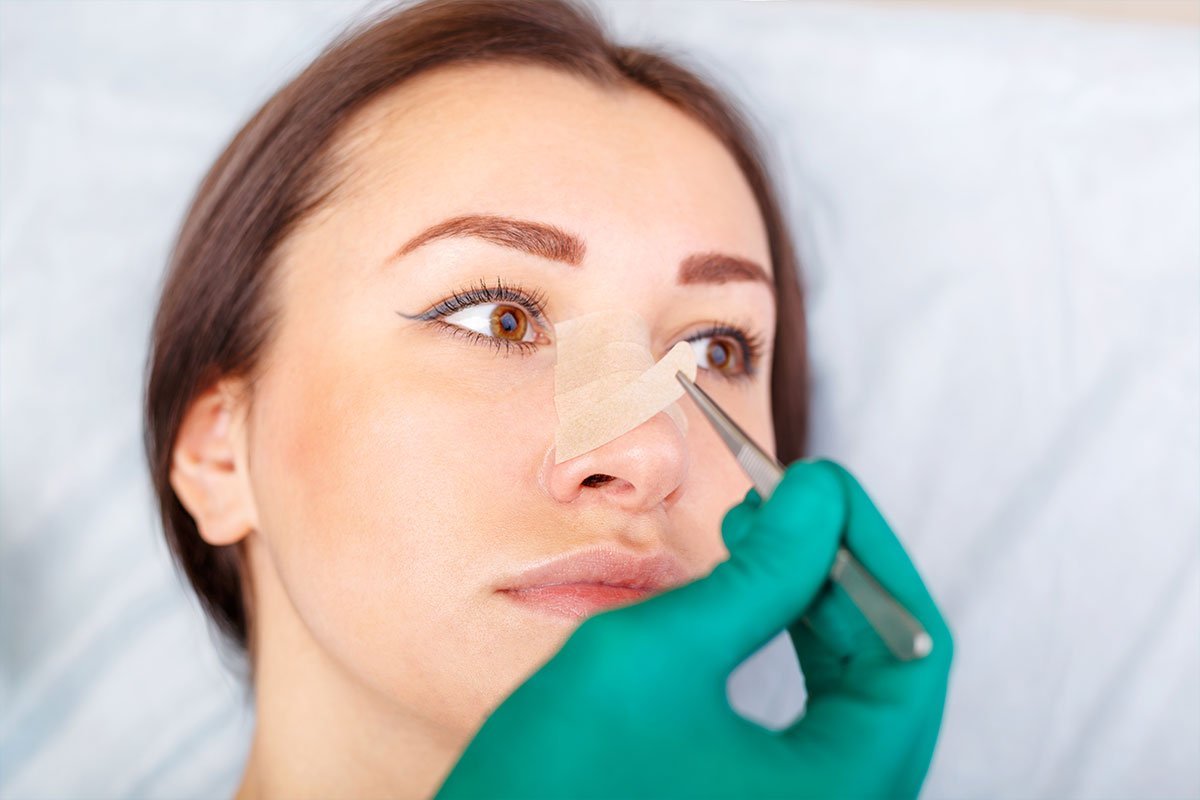IAre you considering rhinoplasty to enhance your facial features? If so, have you ever thought about opting for an ethnic rhinoplasty procedure? Ethnic rhinoplasty is a specialized form of nose surgery that addresses unique nasal characteristics found in various ethnicities. This comprehensive overview will provide you with all the information you need to determine if this type of nose job is right for you. From understanding the different types of ethnic noses to exploring potential risks and benefits, we cover it all! So why wait? Let’s dive into everything there is to know about ethnic rhinoplasty!
Table of Contents
What is Ethnic Rhinoplasty?
Ethnic rhinoplasty is a type of plastic surgery that is specifically designed to correct nasal deformities in patients of African, Hispanic, and Asian descent. The goal of ethnic rhinoplasty is to create a nose that is both aesthetically pleasing and functional, while still maintaining the patient’s cultural identity.
There are many different techniques that can be used in ethnic rhinoplasty, and the precise approach will vary depending on the individual patient’s needs and goals. In some cases, cartilage may need to be removed or reshaped in order to achieve the desired results. Additionally, the nostrils may need to be resized or repositioned.
Ethnic rhinoplasty can be an extremely effective way to improve the appearance of the nose while still respecting the patient’s cultural background. If you are considering this procedure, it is important to consult with a experienced plastic surgeon who has significant experience performing ethnic rhinoplasty.
Benefits of Ethnic Rhinoplasty
There are many benefits that can come from ethnic rhinoplasty, especially when performed by a skilled and experienced surgeon. For patients of African, Asian, and Hispanic descent, ethnic rhinoplasty can help to create a more balanced and proportionate facial appearance. The nose is often the center of attention on the face, so even small changes can make a big difference in overall appearance.
In addition to improving appearance, ethnic rhinoplasty can also help to improve breathing function. Many patients who have undergone the procedure report increased airflow and improved ability to breathe through their nose after surgery. This can be a great benefit for those who suffer from sinus problems or other respiratory issues.
Finally, ethnic rhinoplasty can also help to boost confidence and self-esteem. For many patients, feeling good about their appearance can lead to positive changes in other areas of their life. If you are considering ethnic rhinoplasty, be sure to discuss all of the potential benefits with your surgeon so that you can make the best decision for your needs and goals.
Who Is A Good Candidate for Ethnic Rhinoplasty?
Candidates for ethnic rhinoplasty are people of color who are dissatisfied with the shape and/or size of their nose. They may feel that their nose is too wide, too narrow, too short, or too long. They may also have a bump on the bridge of their nose that they would like to remove. In addition, candidates for ethnic rhinoplasty may have nostrils that are excessively flared or otherwise misshapen.
Risks and Complications of Ethnic Rhinoplasty
Rhinoplasty, also called nose surgery, is a surgical procedure that changes the shape of your nose. It can make your nose bigger or smaller, change the angle between your upper lip and nose, narrow the nostrils, or change the tip of your nose. Rhinoplasty can also improve breathing by correcting a deviated septum, which is a common condition that causes difficulty breathing.
Ethnic rhinoplasty is a type of rhinoplasty that is specifically tailored to patients of certain ethnicities, such as African American, Asian, Middle Eastern, or Hispanic. These patients often have specific concerns about their noses that cannot be addressed with traditional rhinoplasty techniques. For example, many African American patients are concerned with the size and shape of their noses, as well as the appearance of nostrils that are too wide or ‘flared.’ Asian patients may be concerned with a ‘flat’ appearance to their noses, while Middle Eastern and Hispanic patients may want to address issues such as a bulbous nose tip or a hooked appearance.
As with any surgery, there are risks and complications associated with ethnic rhinoplasty. These include bleeding, infection, scarring, anesthesia risks, and numbness. In some cases, the desired results may not be achieved or the nose may appear unnatural. It is important to discuss all of these risks with your surgeon before undergoing ethnic rhinoplasty.
 Preparation for an Ethnic Rhinoplasty Procedure
Preparation for an Ethnic Rhinoplasty Procedure
When preparing for an ethnic rhinoplasty procedure, it is important to have realistic expectations and understand that the results will not be immediately visible. The surgery will require a cartilage graft from another area of your body, which means that there will be some scarring. It is also important to have a good support system in place, as the recovery process can be lengthy and difficult. You should avoid smoking and drinking alcohol for at least two weeks before and after the surgery, as these substances can interfere with healing.
Recovery After an Ethnic Rhinoplasty Procedure
Assuming you are referring to the blog post titled ‘Is Ethnic Rhinoplasty Right for You? A Comprehensive Overview’, the subheading ‘Recovery After an Ethnic Rhinoplasty Procedure’ would discuss the recovery process following an ethnic rhinoplasty.
The recovery process following an ethnic rhinoplasty is typically very similar to that of any other type of nose surgery. Most patients will experience some swelling and bruising around the eyes, which will resolve within a week or two. It is important to keep your head elevated during this time to help reduce swelling. You may also have some drainage from your nostrils for the first few days, which is normal. Your surgeon will place gauze pads inside your nostrils to help absorb any drainage.
You will likely have a splint on your nose for the first week, which will help support the new shape of your nose as it heals. You should avoid bumping or hitting your nose during this time. also need to avoid blowing your nose and wearing glasses. Your surgeon will give you specific instructions on how to care for your splint and nose in general during this time.
In most cases, patients can return to work and their normal activities after about a week, although they may need to take it easy for a few more weeks before returning to more strenuous activities like working out. Overall, the recovery process following an ethnic rhinoplasty is typically fairly straightforward.
Alternatives to Ethnic Rhinoplasty
There are a number of reasons why someone might seek out an alternative to ethnic rhinoplasty. Perhaps they feel that their nose is already proportionate to the rest of their face and they don’t want to change its shape. Or, they may be concerned about the potential risks and side effects associated with surgery. Whatever the reason, there are a few options available for those looking for an alternative to ethnic rhinoplasty.
One popular option is nonsurgical rhinoplasty, which uses injectable fillers to alter the shape of the nose without surgery. This procedure is often used to correct minor imperfections or add volume to the nose. It is usually not effective for major changes, however.
Another alternative is revision rhinoplasty, which is a type of surgery that can be used to improve the results of a previous nose job. This option may be recommended if you are unhappy with your current results or if your original surgeon was not able to achieve your desired look. Revision rhinoplasty is typically more complex and expensive than primary rhinoplasty, so it’s important to consult with a board-certified facial plastic surgeon who has experience performing this type of procedure.
If you’re considering any type of nose surgery, it’s important to do your research and consult with a qualified surgeon before making any decisions.
Conclusion
Overall, ethnic rhinoplasty is a great option for those who want to improve the look of their nose without completely changing it. The procedure can help you achieve a more balanced facial profile and create an aesthetically pleasing appearance that best reflects your heritage. With the right surgeon, you can be sure that your results will be natural-looking and beautiful. If you’re considering ethnic rhinoplasty, make sure to do your research and find an experienced plastic surgeon with lots of experience performing this type of surgery.

